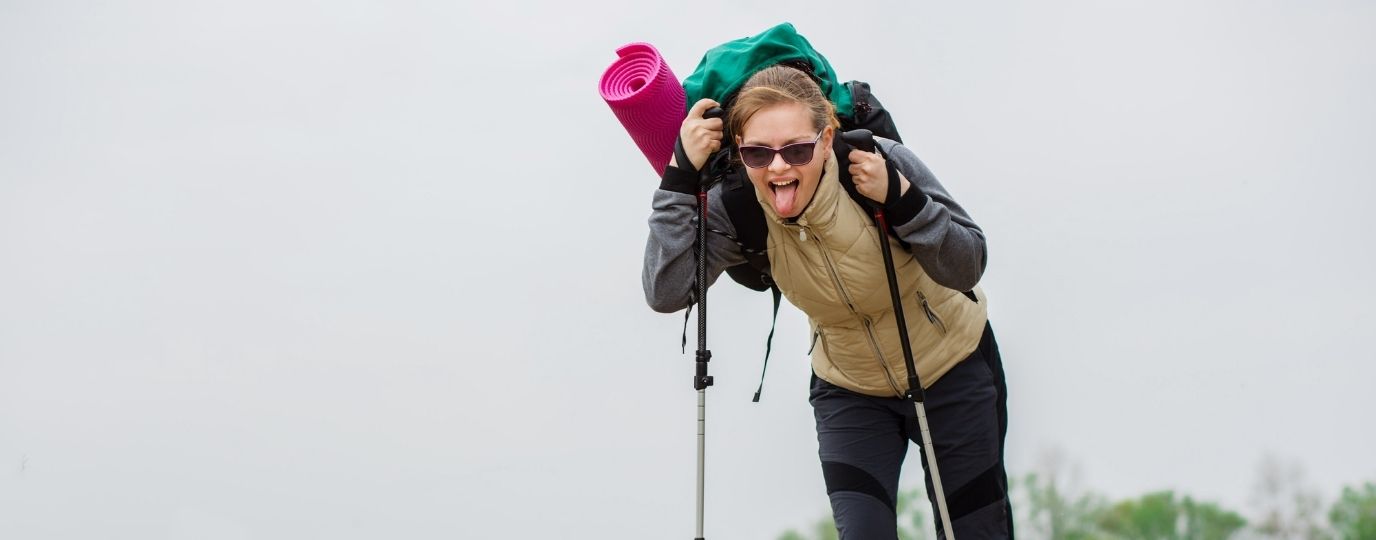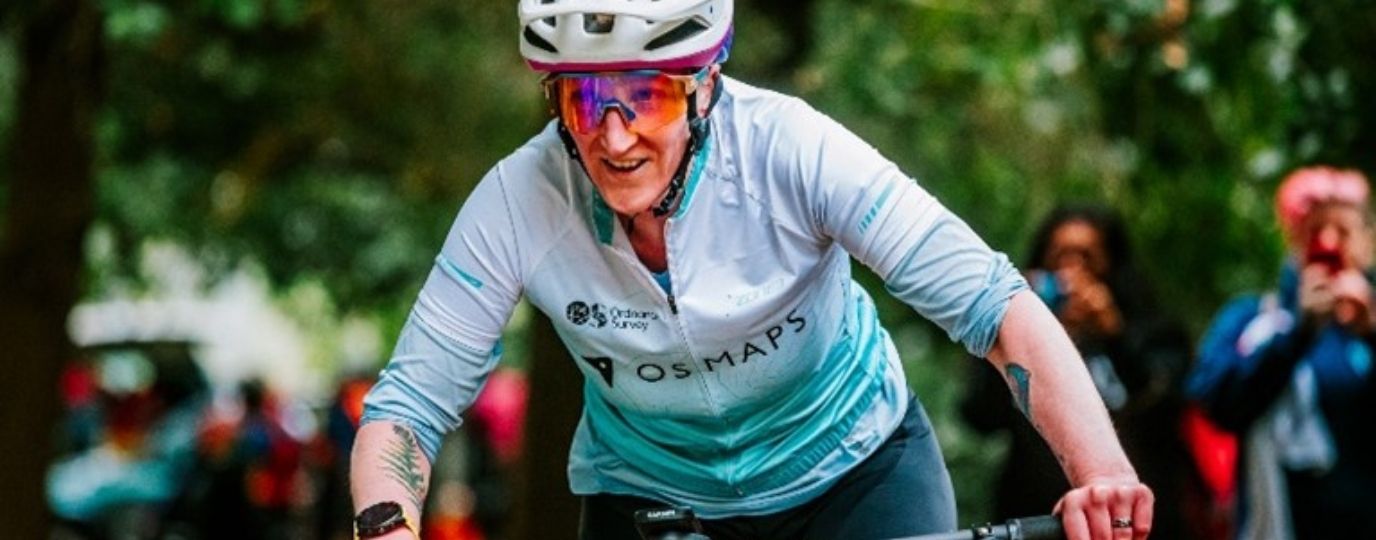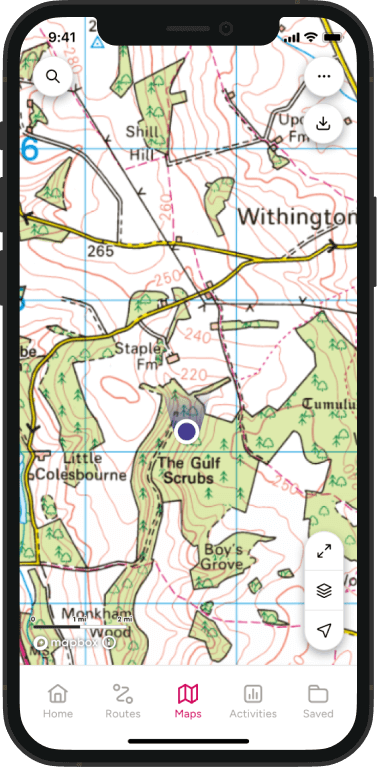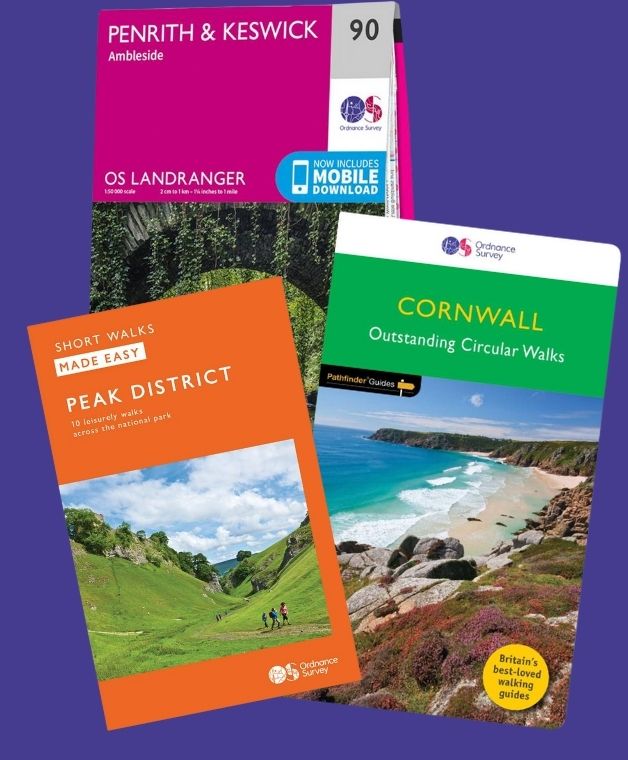Women’s Hiking Backpacks – It’s not just about the colour!
This article is a complete guide to understanding the design differences between men’s and women’s backpacks and how getting a well fitting back pack (whether you are male or female) could transform your enjoyment outdoors and reduce or eradicate pain in your neck, back and hips. We all know that men and women have distinct differences, so why settle for a unisex, one size fits all backpack.
When it comes to outdoor gear, comfort and functionality are everything. While many backpacks are marketed as unisex, leading outdoor brands have developed women-specific designs that go beyond aesthetics. The adjustments are made to better fit the female body, enhancing comfort, support, and performance and taking into account that women have narrower shoulders, boobs and different shaped hips to men.
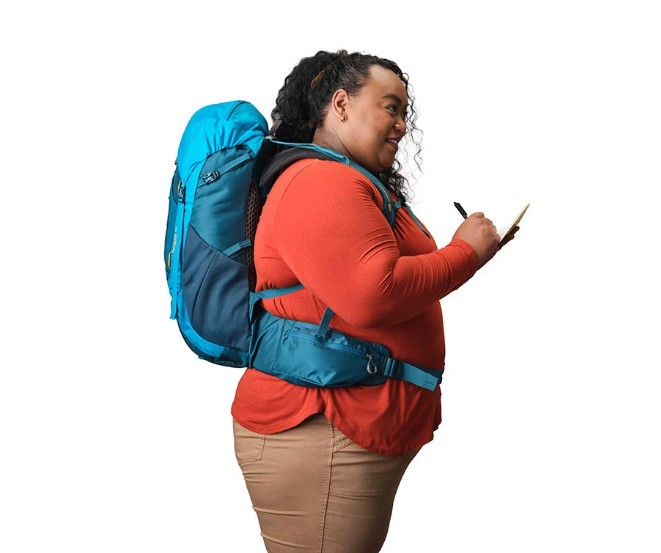
Some brands have now also developed plus size ranges of back packs, helping make getting outdoors easier (and more comfortable) for more people. See our comparison table at the end of this post to find the brands that are leading the way in inclusive design.
Essential Differences: Designed for Comfort and Fit
Shoulder Harness
Women’s backpacks feature shoulder harnesses with closer attachment points, accommodating narrower shoulders. The strap angles are also adjusted to take into account a women’s completely different shaped chest, reducing chafing and pressure points. Many models include extra padding and sometimes wider straps, which help distribute weight more evenly and reduce fatigue on long hikes.
Only 20% of the weight should be on your shoulders!
If you experience headaches, numbness in your arms, or soreness in your neck and shoulders while hiking with a heavy pack, it may be due to excessive weight pinching important muscles and vessels in your shoulders. Only 20% of the weight should be on your shoulders, the rest should be carried on your hips.
Benefit: These design changes help prevent shoulder strain and improve load stability, especially during extended wear.
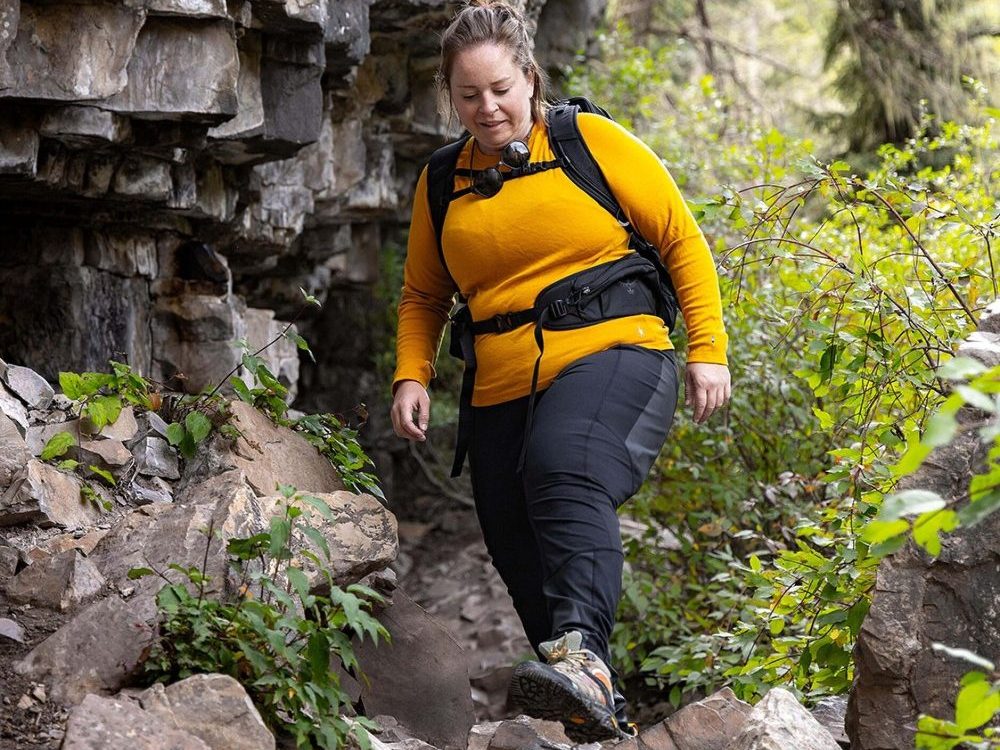
Sternum Strap
The sternum strap in women’s packs is typically positioned higher to avoid uncomfortable pressure across the chest. It also offers a different range of adjustability to suit various torso shapes. The last thing you want is a strap that is uncomfortable and needs constant adjustment.
Benefit: This placement enhances breathing comfort and prevents the strap from interfering with chest movement.
Torso Length
Women’s packs are built with a shorter torso length range, reflecting average female proportions.
Benefit: A better torso fit ensures the pack’s weight is properly transferred to the hips, reducing back strain and improving balance.
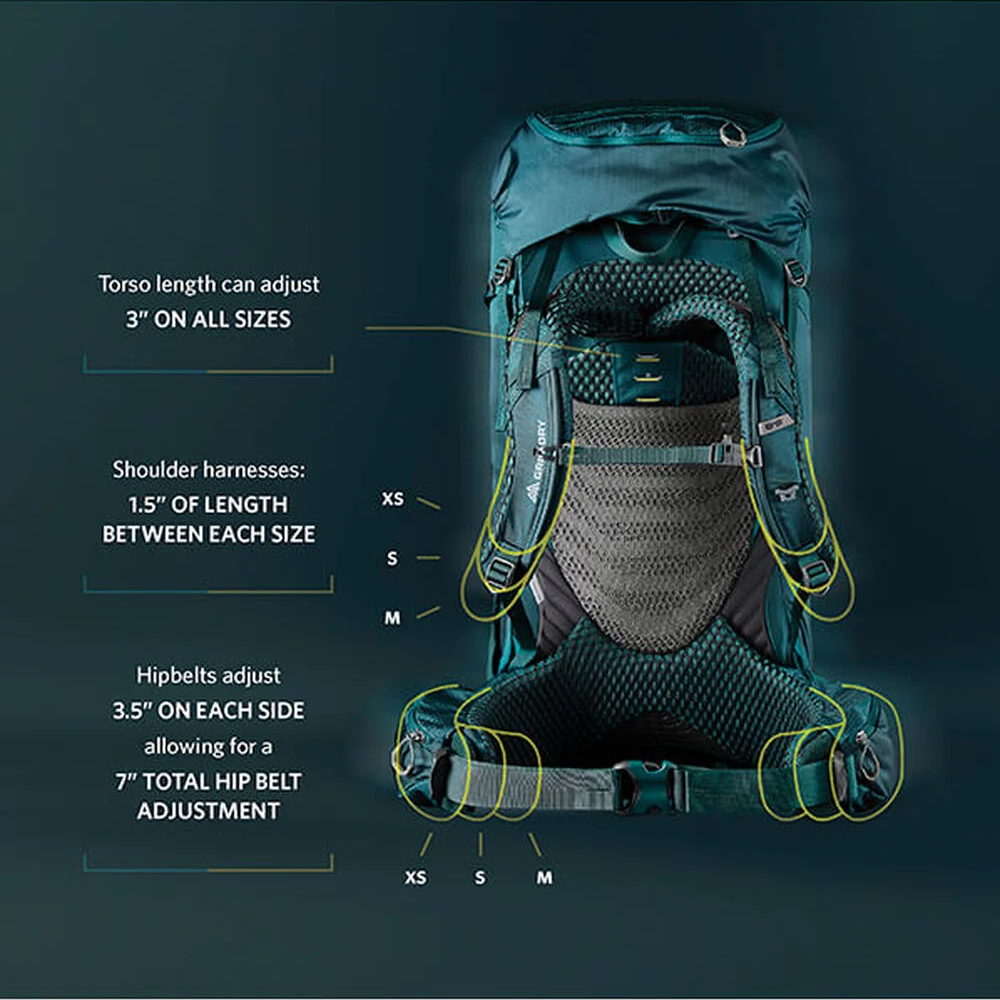
Hip Belt and Lumbar Padding
The hip belt and lumbar padding are contoured to match the curves of the female body. These areas are crucial for weight distribution and stability. Most of a backpack’s weight – up to 80% – should be supported by your hips. If you find the straps don’t fit, consider trying plus size or ‘extended fit’ as you will be carrying all the weight in the wrong place otherwise and this could damage your back.
Benefit: A well-fitted hip belt reduces pressure on the lower back and hips, making it easier to carry heavier loads over long distances.
Volume
Women’s backpacks often have slightly smaller volumes than their male counterparts (e.g., 60L vs. 65L), though this varies by model.
Beware of pink-washing…
Some companies say they have women’s packs but actually they’re the same pack in more traditionally feminine colours. Hopefully the days of simply making a version in pink or purple will soon be behind us… although we did come across a few examples of this when researching.
To avoid being pink-washed, take a look at the size guide when looking at the bag and see how it varies to the alternative men’s version. Most brands have simply opted to say all bags are unisex. This doesn’t mean they won’t fit a women, but getting a bag specifically designed to fit a woman is highly likely to increase your comfort levels when hiking.
Interchangeability: Can Men Use Women’s Backpacks?
Absolutely. While these designs are based on average anatomical differences, everyone’s body is unique. Men with shorter torsos or narrower shoulders may find women’s packs more comfortable, and vice versa. Some of the brands refer to their ‘women’s’ ranges as slim or narrow fit so that they also appeal to men.
Plus-Size Options: Inclusive Design for All Body Types
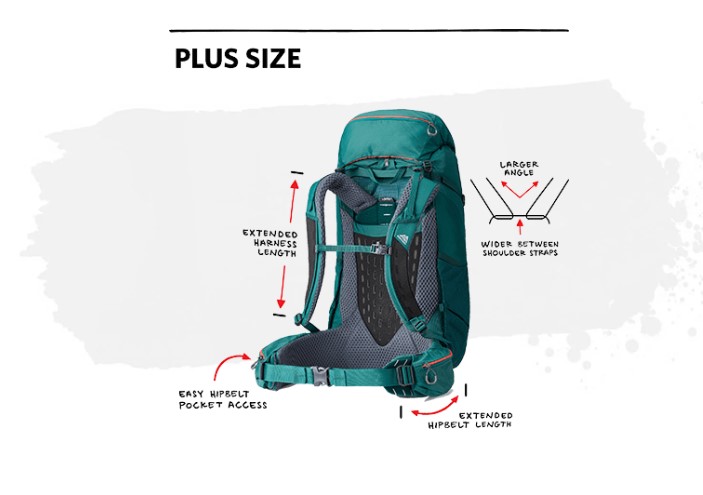
A few brands have introduced plus-size backpacks (with Gregory being the first in the industry and with the most options in their range) for both women and men, some call them extended fit. These models include:
- Longer and wider shoulder straps
- Wider attachment points with larger angles
- Extended hip belt padding
- Extended load lifter straps
Benefit: These adjustments ensure that all hikers, regardless of body size, can enjoy a secure, comfortable fit and full functionality on the trail.
A Checklist for what to look for in a Well-Fitting Women’s Backpack
Fit & Comfort
- Torso length matches your body
- Shoulder straps sit comfortably without pinching or gaping
- Straps are contoured to fit the female frame (angled and padded)
- Sternum strap sits above the chest and is adjustable
- Hip belt wraps snugly around the hips, not the waist
- Lumbar padding supports the lower back without pressure points
- Load lifters are adjustable and help pull the pack closer to your body
- Back panel provides ventilation and contours to your spine
- Pack stays stable when walking, climbing, or bending
Functionality
- Volume suits your trip length – no need to carry a huge back pack.
- Pockets and access points are reachable without removing the pack
- Buckles and zippers are easy to use
- Hydration system compatible (if needed)
- Compression straps to help stabilise the load
Top Tips from our OS Champions
OS Champions Gee Jackson and May Cheung had some great advice around testing out the right backpack. When you’re trying the pack ensure you fill it up so you can experience how it feels when it’s fully packed. When out shopping any good backpack retailer should allow you to use some stock or weights to help you get a realistic feel for the fit.
What a Poor Fit Feels Like
You constantly adjust the straps while walking
Shoulder straps dig in or slide off
Sternum strap presses uncomfortably on the chest
Hip belt sits on your waist, not your hips
Backpack pulls you backward or feels unstable
Back panel causes rubbing or sweating
Weight feels unevenly distributed
You experience numbness or tingling in shoulders or hips
Choosing the right backpack is about more than just capacity—it’s about how it fits your body. Women-specific backpacks are thoughtfully engineered to support female anatomy, making your outdoor adventures more comfortable and enjoyable. Whether you’re heading out for a few hours walking or on a multi-day hike in the mountains, investing in a pack that fits well can make all the difference. if you’re into the complete history of backpack construction (the first women’s back pack was designed in 1979! – have a look at this article – A Guide to Backpack harness Innovation
Which backpack brands cater for women and plus size?
| Brand | Men’s | Women’s | Unisex | Plus-Size | Shop Link |
|---|---|---|---|---|---|
| Osprey | ✅ | ✅ | ✅ | ✅ | Osprey UK |
| Gregory | ✅ | ✅ | ✅ | ✅ | Gregory Packs UK |
| Deuter | ✅ | ✅ (SL Fit) | ✅ | ❌ | Deuter UK |
| Lowe Alpine | ✅ | ✅ (ND Fit) | ✅ | ❌ | Lowe Alpine UK |
| Berghaus | ✅ | ✅ | ✅ | ❌ | Berghaus UK |
| Fjällräven | ✅ | ❌ | Fjällräven UK | ||
| Mountain Warehouse | ✅* | ✅ | ❌ | Mountain Warehouse | |
| Rab | ✅ | ✅ (Narrow Fit) | ✅ | ❌ | Rab UK |
| Patagonia | ✅ | ❌ | Patagonia UK | ||
| Decathlon | ✅ | ✅ | ✅ | ❌ | Decathlon UK |
| The North Face | ✅ | ✅ | ✅ | ❌ | The North Face |
- Mountain Warehouse does have products that say women’s fit available but when you use the filter over 600 products in their bag section show as Unisex and just 3 for women.
Here’s a great video from Gregory, who are leading the way in backpack design, showing how your backpack should fit.
Let us know if you have a favourite back pack that fit’s you really well!
Find more articles written to help get more women outdoors on our dedicated OS Women Outdoors Hub

EXPLORE THE
OS Shop
We are with you every step of the way. Shop our trusted walking and hiking maps and guidebooks so you can explore the outdoors with confidence.
Go to the shop